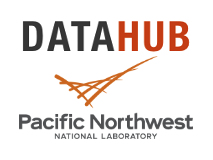Journal Article
Hydrology and Earth System Sciences, vol. 22, iss. 1, pp. 241-263, 2018
Authors
Yu Zhang, Ming Pan, Justin Sheffield, Amanda L. Siemann, Colby K. Fisher, Miaoling Liang, Hylke E. Beck, Niko Wanders, Rosalyn F. MacCracken, Paul R. Houser, Tian Zhou, Dennis P. Lettenmaier, Rachel T. Pinker, Janice Bytheway, Christian D. Kummerow, Eric F. Wood
Abstract
Abstract. Closing the terrestrial water budget is necessary to provide
consistent estimates of budget components for understanding water resources
and changes over time. Given the lack of in situ observations of budget
components at anything but local scale, merging information from multiple
data sources (e.g., in situ observation, satellite remote sensing, land
surface model, and reanalysis) through data assimilation techniques that
optimize the estimation of fluxes is a promising approach. Conditioned on
the current limited data availability, a systematic method is developed to
optimally combine multiple available data sources for precipitation (P),
evapotranspiration (ET), runoff (R), and the total water storage change
(TWSC) at 0.5∘ spatial resolution globally and to obtain
water budget closure (i.e., to enforce P-ET-R-TWSC= 0) through a constrained
Kalman filter (CKF) data assimilation technique under the assumption that
the deviation from the ensemble mean of all data sources for the same budget
variable is used as a proxy of the uncertainty in individual water budget
variables. The resulting long-term (1984–2010), monthly
0.5∘ resolution global terrestrial water cycle Climate Data
Record (CDR) data set is developed under the auspices of the National
Aeronautics and Space Administration (NASA) Earth System Data Records
(ESDRs) program. This data set serves to bridge the gap between sparsely
gauged regions and the regions with sufficient in situ observations in
investigating the temporal and spatial variability in the terrestrial
hydrology at multiple scales. The CDR created in this study is validated
against in situ measurements like river discharge from the Global Runoff
Data Centre (GRDC) and the United States Geological Survey (USGS), and ET
from FLUXNET. The data set is shown to be reliable and can serve the
scientific community in understanding historical climate variability in
water cycle fluxes and stores, benchmarking the current climate, and
validating models.
